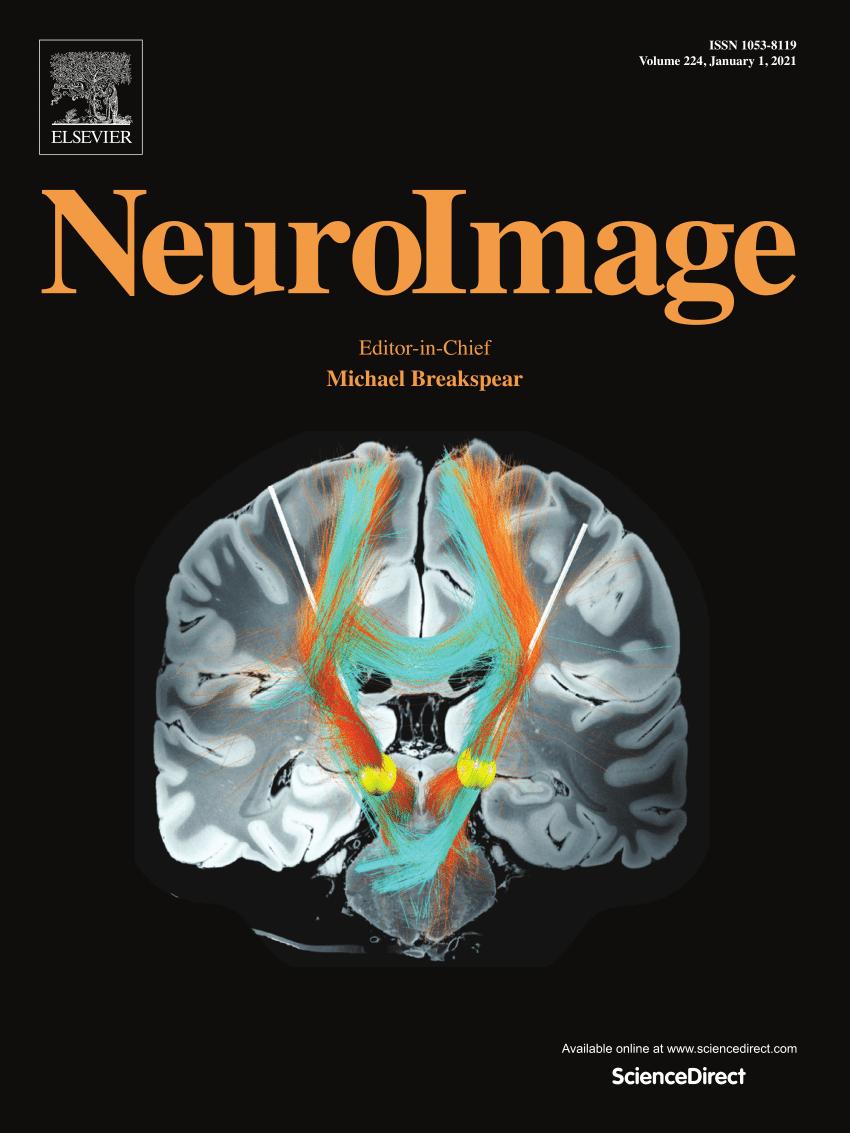Robust computation of subcortical functional connectivity guided by quantitative susceptibility mapping: An application in Parkinson’s disease diagnosis
IF 4.5
2区 医学
Q1 NEUROIMAGING
引用次数: 0
Abstract
Previous resting state functional MRI (rs-fMRI) analyses of the basal ganglia in Parkinson’s disease heavily relied on T1-weighted imaging (T1WI) atlases. However, subcortical structures are characterized by subtle contrast differences, making their accurate delineation challenging on T1WI. In this study, we aimed to introduce and validate a method that incorporates quantitative susceptibility mapping (QSM) into the rs-fMRI analytical pipeline to achieve precise subcortical nuclei segmentation and improve the stability of RSFC measurements in Parkinson’s disease. A total of 321 participants (148 patients with Parkinson’s Disease and 173 normal controls) were enrolled. We performed cross-modal registration at the individual level for rs-fMRI to QSM (FUNC2QSM) and T1WI (FUNC2T1), respectively.The consistency and accuracy of resting state functional connectivity (RSFC) measurements in two registration approaches were assessed by intraclass correlation coefficient and mutual information. Bootstrap analysis was performed to validate the stability of the RSFC differences between Parkinson’s disease and normal controls. RSFC-based machine learning models were constructed for Parkinson’s disease classification, using optimized hyperparameters (RandomizedSearchCV with 5-fold cross-validation). The consistency of RSFC measurements between the two registration methods was poor, whereas the QSM-guided approach showed better mutual information values, suggesting higher registration accuracy. The disruptions of RSFC identified with the QSM-guided approach were more stable and reliable, as confirmed by bootstrap analysis. In classification models, the QSM-guided method consistently outperformed the T1WI-guided method, achieving higher test-set ROC-AUC values (FUNC2QSM: 0.87–0.90, FUNC2T1: 0.67–0.70). The QSM-guided approach effectively enhanced the accuracy of subcortical segmentation and the stability of RSFC measurement, thus facilitating future biomarker development in Parkinson’s disease.
定量易感性图谱指导下皮质下功能连通性的鲁棒计算:在帕金森病诊断中的应用。
以前对帕金森病基底神经节的静息状态功能MRI (rs-fMRI)分析严重依赖于t1加权成像(T1WI)图谱。然而,皮质下结构的特征是细微的对比度差异,使得其在T1WI上的准确描绘具有挑战性。在本研究中,我们旨在引入并验证一种将定量易感性图谱(QSM)纳入rs-fMRI分析管道的方法,以实现皮质下核的精确分割,并提高帕金森病RSFC测量的稳定性。共有321名参与者(148名帕金森病患者和173名正常对照)被纳入研究。我们在个体水平上分别进行了rs-fMRI到QSM (FUNC2QSM)和T1WI (FUNC2T1)的交叉模态配准。通过类内相关系数和互信息评价两种配准方法的静息状态功能连接(RSFC)测量结果的一致性和准确性。采用Bootstrap分析验证帕金森病与正常对照之间RSFC差异的稳定性。使用优化的超参数(RandomizedSearchCV, 5倍交叉验证),构建基于rsfc的帕金森病分类机器学习模型。两种配准方法的RSFC测量值一致性较差,而qsm指导方法具有更好的互信息值,表明配准精度较高。自举分析证实,qsm引导方法识别的RSFC中断更稳定、更可靠。在分类模型中,qsm引导方法始终优于t1wi引导方法,获得更高的测试集ROC-AUC值(FUNC2QSM: 0.87-0.90, FUNC2T1: 0.67-0.70)。qsm引导的方法有效地提高了皮质下分割的准确性和RSFC测量的稳定性,从而促进了帕金森病未来生物标志物的开发。
本文章由计算机程序翻译,如有差异,请以英文原文为准。
求助全文
约1分钟内获得全文
求助全文
来源期刊

NeuroImage
医学-核医学
CiteScore
11.30
自引率
10.50%
发文量
809
审稿时长
63 days
期刊介绍:
NeuroImage, a Journal of Brain Function provides a vehicle for communicating important advances in acquiring, analyzing, and modelling neuroimaging data and in applying these techniques to the study of structure-function and brain-behavior relationships. Though the emphasis is on the macroscopic level of human brain organization, meso-and microscopic neuroimaging across all species will be considered if informative for understanding the aforementioned relationships.
 求助内容:
求助内容: 应助结果提醒方式:
应助结果提醒方式:


